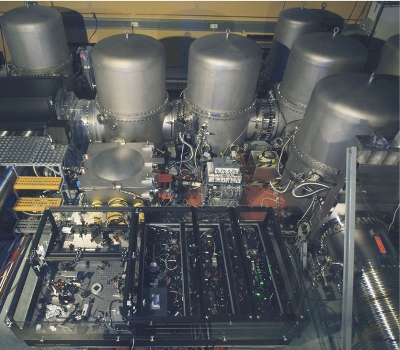Researchers have been searching for gravitational waves, which occur when turbulent supernova explosions and similar cosmic events occur. The gravitational waves are "almost undetectable" and are difficult to measure as they become weak by the time they reach the Earth.
 The new squeezed light laser of GEO600. A highly complex laser system produces light which particularly quiet in the gravitational wave detector
The new squeezed light laser of GEO600. A highly complex laser system produces light which particularly quiet in the gravitational wave detector
Detection of these waves would alter a gravitational wave detector’s relative measuring path by approximately 1/1000th of a proton diameter. The devices used to make measurements of gravitational waves are very sensitive, but "shot noise", a quantum light phenomenon, which is an uncertainty of the intensity of laser, restricts the accuracy of measurement.
Scientists belonging to the Max Planck Institute for Gravitational Physics (Albert Einstein Institute) and the Leibniz University Hannover’s Institute for Gravitational Physics are taking part in an experiment with the GEO600 gravitational wave detector at the Center for Quantum Engineering and Space-Time Research cluster of excellence. They have used "squeezed laser light" to remove the interference of shot noise and also increase the GEO600’s measuring sensitivity to 150%.
The "squeezed laser light" is a special form of light source that the researchers have integrated into the gravitational wave detector. It smoothens the signal beam of the detector. The researchers utilized the Heisenberg uncertainty principle for reducing the shot noise. They fed the normal laser light and the squeezed light into the instrument, which led to a signal beam with more uniform intensity.
The results of the study have been published online in the journal Nature Physics.